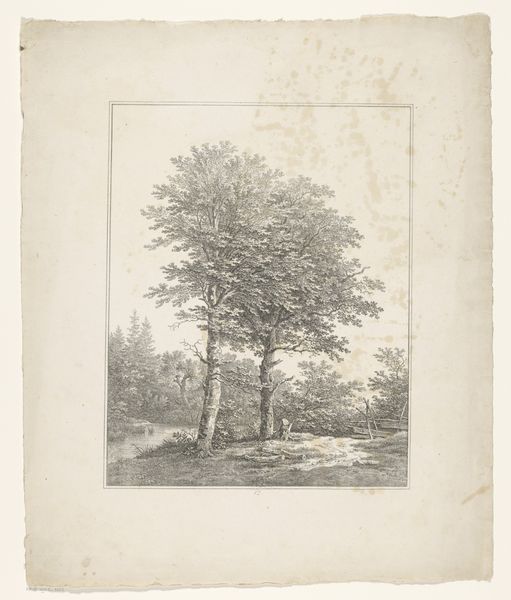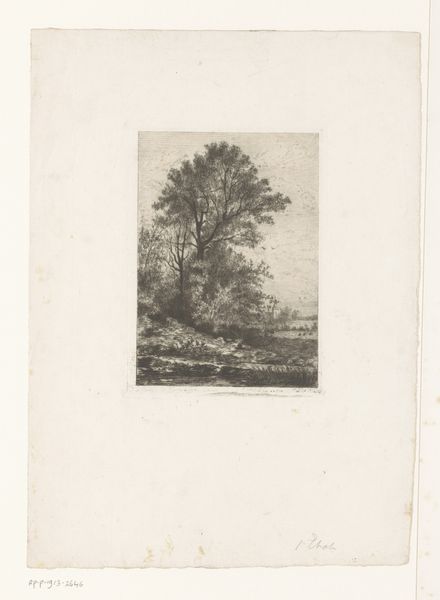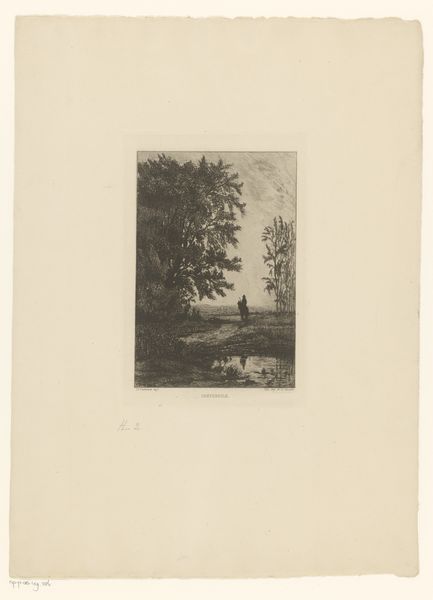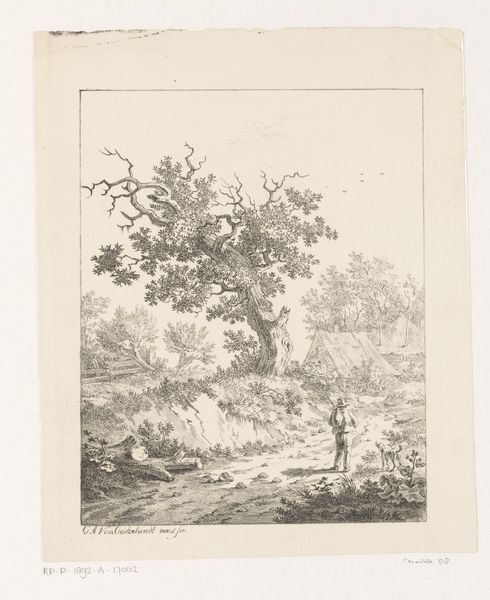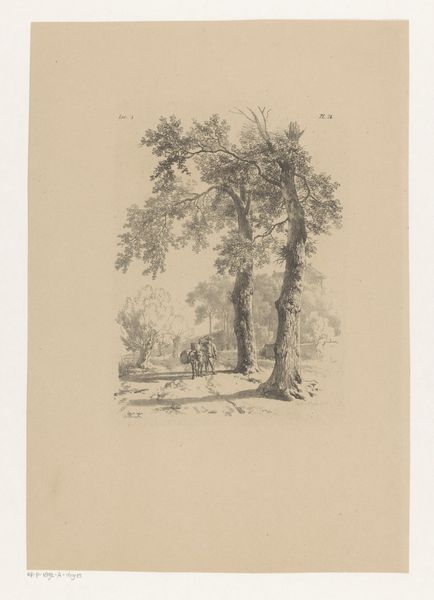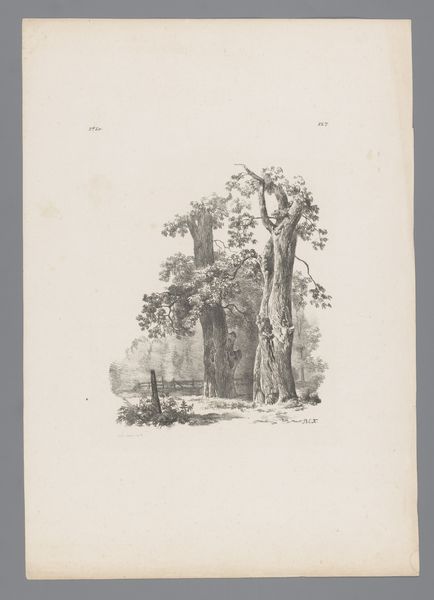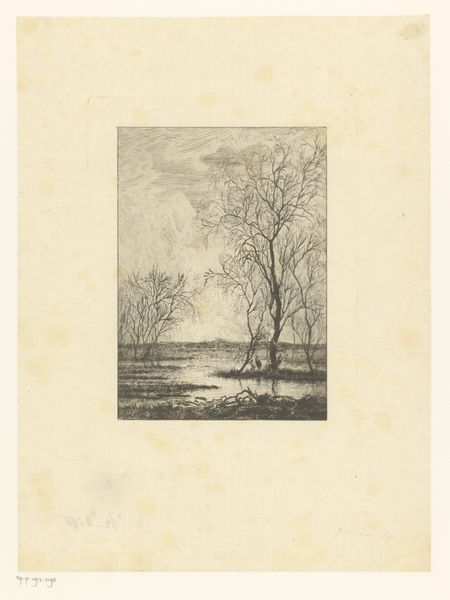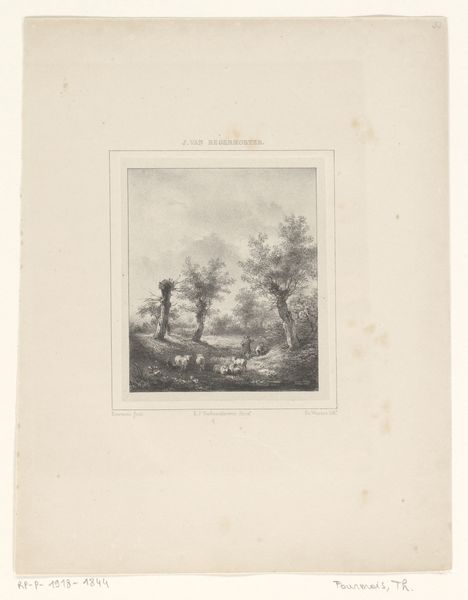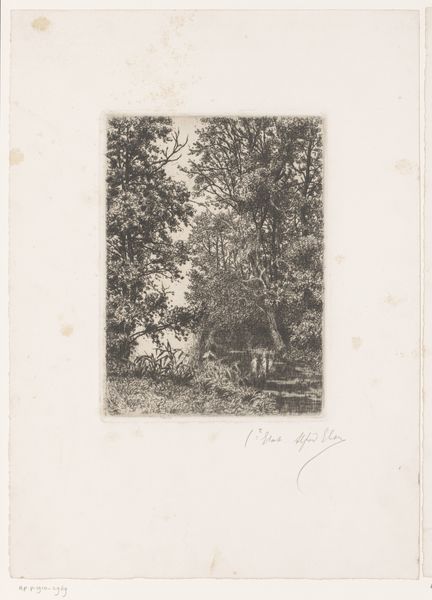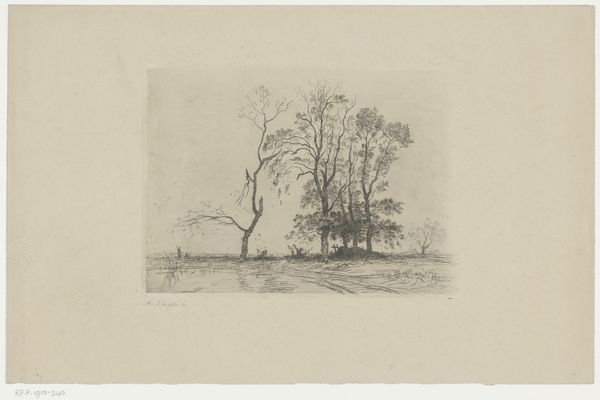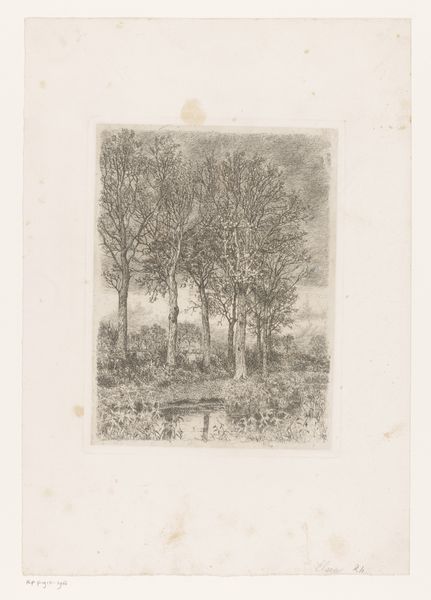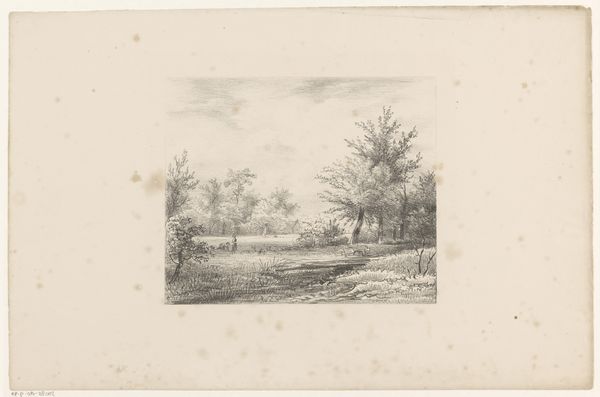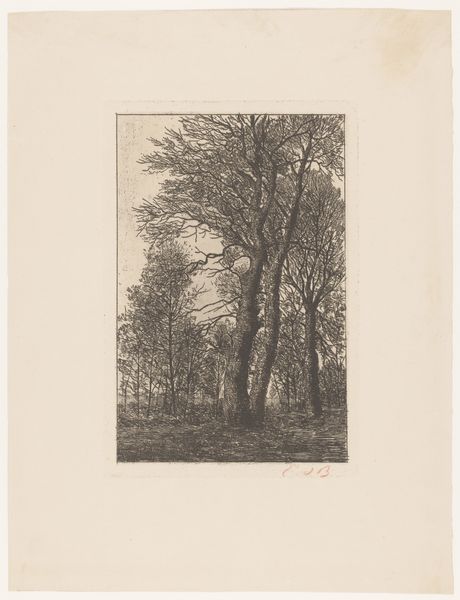
Dimensions: height 359 mm, width 255 mm
Copyright: Rijks Museum: Open Domain
Editor: This drawing, "Landschap met boerderijen," or "Landscape with Farms," by Bruno van Straaten, dates back to around 1858-1859. It’s a pencil drawing on paper. I find the composition quite calming, but also a bit melancholic. What do you see in this piece? Curator: I see a deliberate construction of an idealized rural life, reflective of its time, yet also possibly masking deeper societal tensions. Romanticism often valorized the countryside, positioning it in stark contrast to the perceived corruptions of urban centers. Given Van Straaten’s location, it is fair to wonder, to what extent does this drawing romanticize or, perhaps, sanitize rural labor? Does it erase the difficult realities of agricultural work and the class disparities inherent in the agrarian system? Editor: That’s a perspective I hadn’t considered. So you're suggesting it might be more than just a pretty landscape? Curator: Precisely. Look at the figures. They appear almost as incidental elements, devoid of specific identity or hardship. The picturesque aesthetic, while pleasing to the eye, potentially conceals complex socioeconomic dynamics. Whose gaze is being prioritized here? Is this landscape for the consumption of a rising middle class, yearning for an imagined simpler life? How does this artistic choice normalize social inequality, and environmental impact of human development? Editor: So by examining whose story is missing or softened, we can better understand the drawing's social context. Curator: Exactly! And in considering the power dynamics at play, it becomes easier to analyze this landscape as more than just a scene, but as a potential reflection of the unequal conditions that made such leisurely contemplation of the pastoral possible. Editor: This makes me want to examine other landscapes from the same period, keeping in mind the social narratives they might be reinforcing or overlooking. Curator: That’s the spirit! It is about engaging with art as a conduit for exploring complex social realities and considering who has the power to shape dominant cultural narratives.
Comments
No comments
Be the first to comment and join the conversation on the ultimate creative platform.
